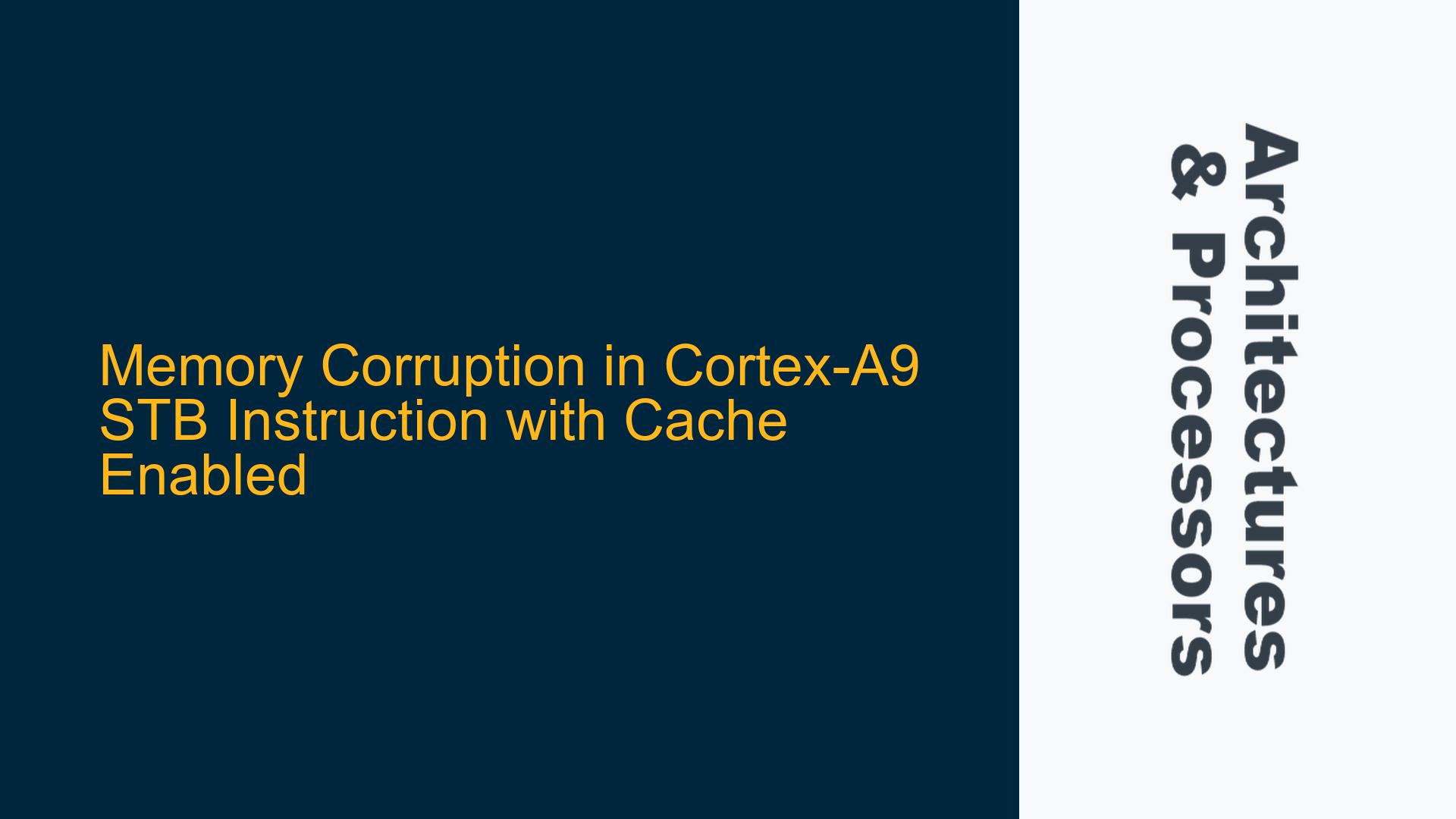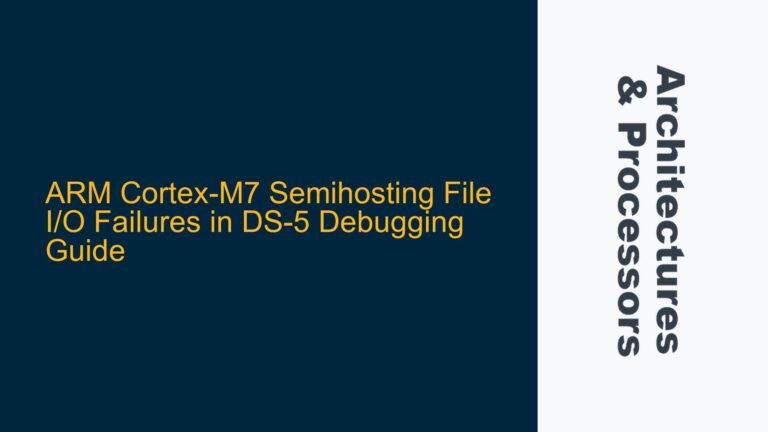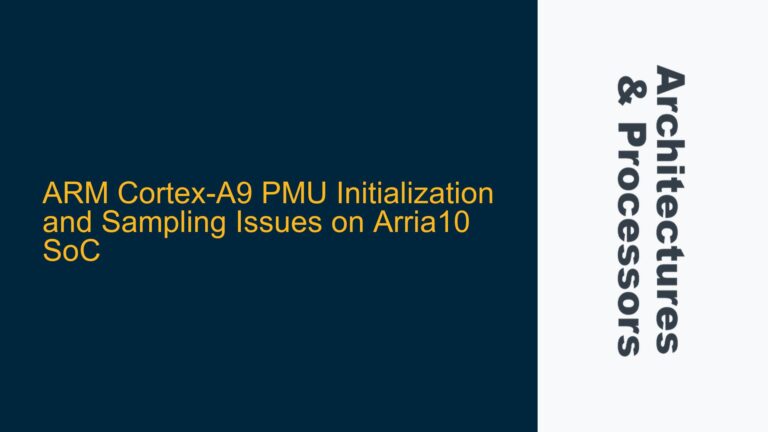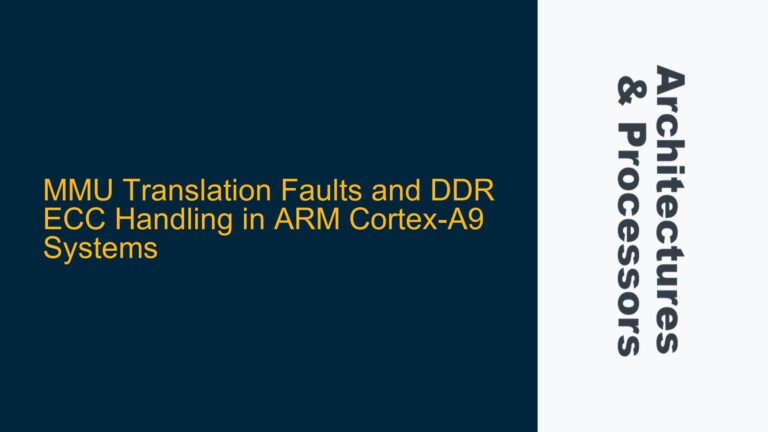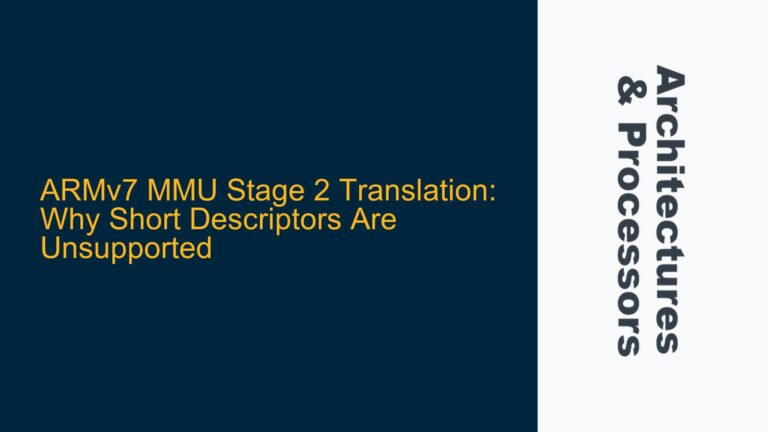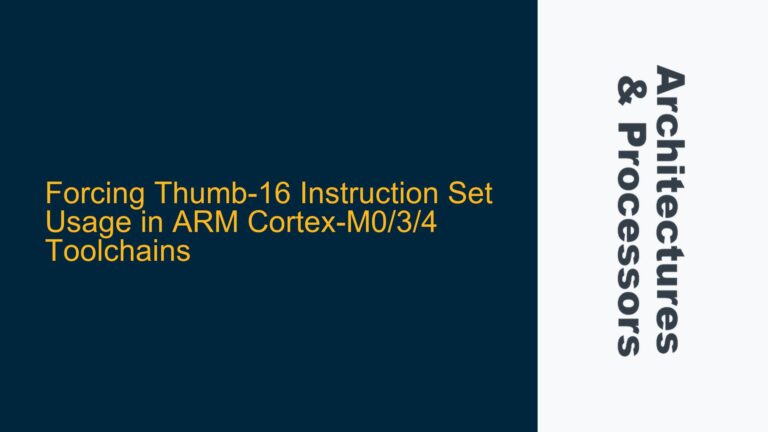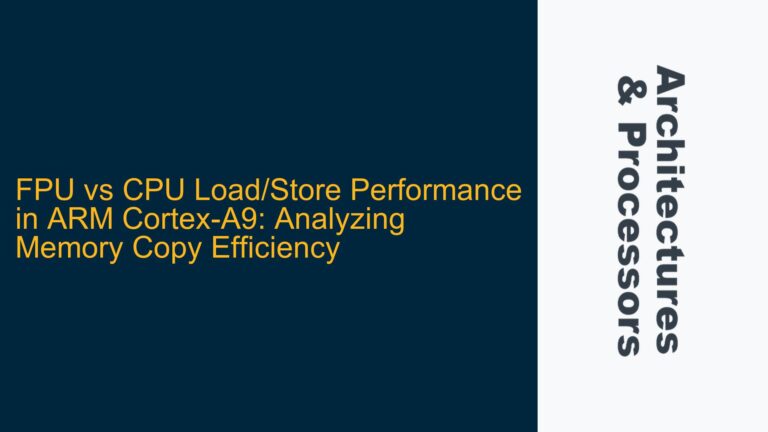Cortex-A9 Memory Corruption During STB Instruction Execution
The issue at hand involves memory corruption occurring during the execution of a specific sequence of ARM instructions on a Cortex-A9 processor. The sequence in question is mov R4, 0; add R1, SP, #16; STB R4,[R1,#-1]!. This sequence is part of a larger routine that runs for extended periods, often hours, before the corruption manifests. The corruption results in a data abort due to a single byte being written to an incorrect memory location, specifically a register value pushed onto the stack. The Cortex-A9 processor in question is part of a Zynq Z7020 SoC running at 666 MHz with both L1 and L2 caches enabled. The corruption is not immediately apparent and only occurs after millions of executions of the code, making it a particularly insidious issue.
The corruption occurs when the STB (Store Byte) instruction writes a byte to a memory location that is not properly decremented. The address calculation for the store operation is intended to write to a location just below the current stack pointer (SP), but due to an apparent glitch in the system, the address is not decremented, leading to the byte being written to a location that overlaps with a previously pushed register value. This results in the corruption of that register value, which subsequently leads to a data abort when the corrupted value is later accessed.
The issue is exacerbated by the presence of multiple interrupts from peripherals such as the EMAC and timers, which may be contributing to the timing-sensitive nature of the corruption. The fact that the corruption only occurs after extended periods of operation suggests that it may be related to a subtle timing or synchronization issue within the processor or its cache subsystem.
Cache Coherency and Interrupt Timing Issues
One of the primary suspects in this issue is the interaction between the Cortex-A9’s cache subsystem and the timing of interrupts. The Cortex-A9 employs a sophisticated cache architecture that includes both L1 and L2 caches, which are designed to improve performance by reducing memory access latency. However, this complexity can also introduce subtle issues, particularly when dealing with cache coherency and the timing of memory operations.
In the case of the STB instruction, the address calculation and the actual store operation are supposed to be atomic with respect to the cache. However, if there is a delay or a glitch in the cache coherency mechanism, it is possible that the address calculation is not properly synchronized with the store operation. This could result in the store operation writing to an incorrect memory location, particularly if an interrupt occurs at just the wrong moment.
Another potential cause is the timing of interrupts from peripherals such as the EMAC and timers. These interrupts can cause the processor to temporarily suspend execution of the current instruction sequence, potentially leading to a situation where the address calculation and the store operation are not properly synchronized. If an interrupt occurs just before the STB instruction is executed, it could cause the address calculation to be delayed, resulting in the store operation writing to an incorrect location.
Additionally, the Cortex-A9’s cache subsystem may not be properly invalidating or flushing the cache lines involved in the store operation. If the cache line containing the target address is not properly invalidated before the store operation, it could result in the store operation writing to an incorrect location. This could be particularly problematic if the cache line is being accessed by another core or peripheral at the same time.
Implementing Cache Management and Synchronization Fixes
To address the memory corruption issue, several steps can be taken to ensure proper cache management and synchronization. These steps involve both software and hardware considerations, and may require modifications to the code, the cache configuration, and the interrupt handling mechanism.
First, it is essential to ensure that the cache lines involved in the store operation are properly invalidated before the STB instruction is executed. This can be achieved by inserting a Data Synchronization Barrier (DSB) instruction before the STB instruction. The DSB instruction ensures that all memory accesses prior to the barrier are completed before any subsequent memory accesses are executed. This can help to prevent the store operation from writing to an incorrect location due to a cache coherency issue.
In addition to the DSB instruction, it may be necessary to explicitly invalidate the cache line containing the target address before the store operation. This can be done using the MCR (Move to Coprocessor Register) instruction to issue a cache invalidate operation to the Cortex-A9’s cache controller. This ensures that the cache line is properly invalidated before the store operation, reducing the risk of a cache coherency issue.
Another important consideration is the timing of interrupts from peripherals such as the EMAC and timers. To minimize the risk of an interrupt causing a synchronization issue, it may be necessary to disable interrupts around the critical section of code that includes the STB instruction. This can be done using the CPSID (Change Processor State, Interrupt Disable) instruction to disable interrupts, followed by the CPSIE (Change Processor State, Interrupt Enable) instruction to re-enable interrupts after the critical section has completed.
In addition to these software fixes, it may also be necessary to adjust the cache configuration to reduce the risk of cache coherency issues. This could involve changing the cache policy to ensure that cache lines are properly invalidated or flushed before they are accessed by the store operation. It may also be necessary to adjust the cache line size or the associativity of the cache to reduce the risk of cache conflicts.
Finally, it is important to thoroughly test the system after implementing these fixes to ensure that the memory corruption issue has been resolved. This may involve running the system for extended periods under heavy load to ensure that the issue does not reoccur. It may also be necessary to use hardware tracing tools such as ETB (Embedded Trace Buffer) or PTM (Program Trace Macrocell) to capture a trace of the last instructions executed before the corruption occurs. This can provide valuable insights into the timing and sequence of events leading up to the corruption, helping to identify any remaining issues that need to be addressed.
In conclusion, the memory corruption issue in the Cortex-A9 processor during the execution of the STB instruction is a complex problem that requires a thorough understanding of the processor’s cache architecture and interrupt handling mechanism. By implementing proper cache management and synchronization techniques, it is possible to mitigate the risk of memory corruption and ensure the reliable operation of the system.
